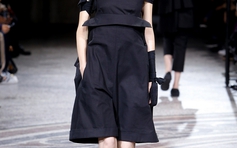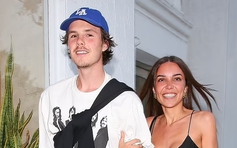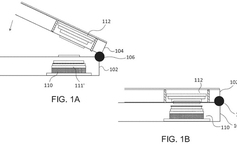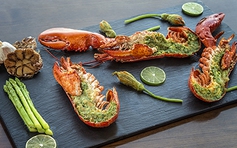Lọc bài viết theo
Chuyên mục
Tất cả
Chào ngày mới
Thời sự
Đời sống
Giáo dục
Kinh tế
Sức khỏe
Thế giới
Giới trẻ
Tôi viết
Văn hóa
Tiêu dùng thông minh
Blog phóng viên
Bạn cần biết
Bạn đọc
Magazine
Chính trị
Du lịch
Giải trí
Công nghệ
Video
Xe
Thể thao
Thời trang trẻ
Việc làm
TNO
Nhật ký Tết Việt
Diễn đàn
Rao vặt
Podcast
Cùng con đi tiếp cuộc đời
Cải chính
7
kết quả phù hợp
Sắp xếp theo

Thư viện thời trang
00:00, 01/10/2016
Spring 2017 Ready-to-Wear
An abstracted X-ray image tacked onto torn black paper served as the invitation to this season's Yohji Yamamoto show. “This invitation is about my feelings,” Yamamoto said after a characteristically contemplative show. “During my time in the fashion business, I’ve felt very alone.” Take a moment to appreciate such candor, whether or not you relate to it. Could the designer have unpacked this collection’s asymmetries, suspended states of undress, forced imperfections, or painted urges, and revealed as much? Likely not. He did, however, provide the surprising inspiration for his black body wrapping, which had the effect of inextricably linking garment to skin. In 1937, Jean Cocteau staged L’Œdipe Roi (Oedipus Rex) in Paris starring Jean Marais. And it was Coco Chanel who costumed the actor’s body in white bandages, subsequently earning her widespread disapproval.For several seasons, Yamamoto’s work has been met with higher industry praise even though he hasn’t much changed his dark, deconstructive refrain. It’s a perception shift, essentially. People feel he’s relevant again. The two red coats that torqued around the body with awkward elegance reminded everyone, like a flashing train light, that this aesthetic had been his domain long before the phenomenal rise of Vetements. One could speculate that these latest strikingly reconfigured jacket silhouettes, combined with the traces of paint marking their surfaces, were inspired by the designer’s fluctuating moods. They expose a level of vulnerability more common in art. Here’s a thought: In 2018, once this show’s venue, the Bourse de Commerce, has been transformed into an art museum belonging to Francois Pinault’s foundation, those silhouettes would make a fine installation.For now though, the sloped pockets floating randomly atop ivory shirtdresses and the braided cords running down the inside of a jacket presented themselves as unsolvable clues. More readable was the designer’s handwritten signature, which he threaded lengthwise into various looks (he sheepishly conceded that this was “commercial”). As with the other Japanese fashion masters, you find yourself asking of Yamamoto, “Do I want to wear something I cannot explain?” Most of the time, in his case, the answer is yes.
Thư viện thời trang
00:00, 08/09/2016







